_(1)_(1).jpg)
Indoor plants not only bring life to your home but also elevate your decor – especially when showcased on stylish plant stands.
In fact, houseplants can boost your mood and reduce stress, so why not display them proudly?
As houseplant expert Lisa Eldred Steinkopf puts it, “An indoor outdoor plant stand highlights your plant… everyone likes to be put on a pedestal, right?”
In this article, we’ll explore 6 DIY plant stand ideas – from upcycled furniture to modern designs – that are budget-friendly, space-saving, and aesthetic.
These plant stand ideas indoor will work in living rooms, apartments, or even as bedroom plant stand ideas to bring a calming green touch to your sleeping space.
Let’s get inspired!
1. Upcycled Ladder Shelf Stand (Vertical Garden)
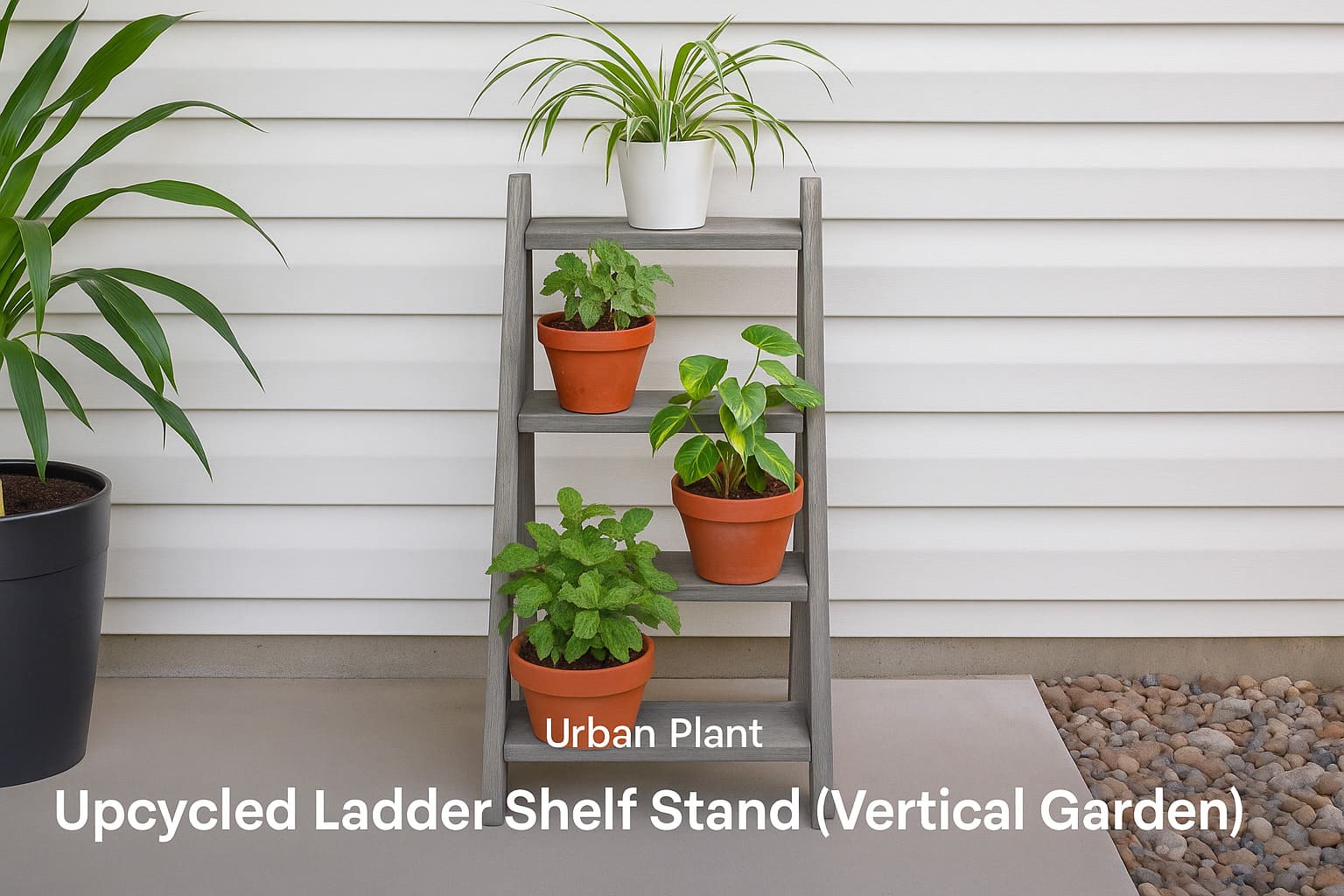
Turn an old ladder (or a DIY-built ladder frame) into a multi-tiered plant shelf.
Ladder plant stands are perfect space-saving plant stands – they take advantage of vertical height, allowing you to display many plants in a narrow footprint. Simply secure wooden boards across the rungs as shelves.
Paint or stain the ladder to match your decor, or leave it rustic for farmhouse charm.
This idea is budget-friendly (often you can find an old ladder in thrift stores or your garage) and adds a lovely boho vibe to any room.
How to Do It:
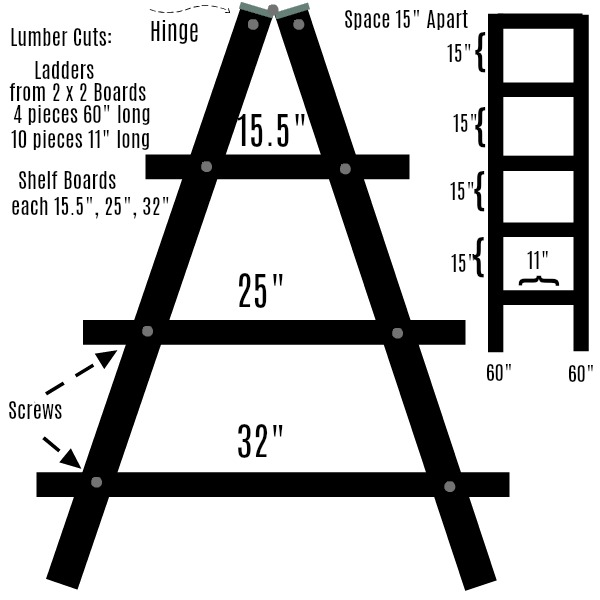
Open a folding ladder or lean a single ladder against the wall. Place planks on the rungs to create tiers.
Ensure stability by anchoring the ladder if it’s a lean-to style.
Arrange trailing vines on top so they cascade down, and smaller potted herbs or succulents on lower shelves for a tiered green display.
Why It’s Great:
Ladder stands provide a vertical garden wall effect, ideal for apartments and tight corners
You can fit multiple plants – from leafy ferns to indoor herbs – without using much floor space. It’s also easily movable.
For renters, a ladder stand creates a lush look with no wall installation needed (a truly renter-friendly indoor garden solution!).
Also Read
How To Start Growing Vegetables On Your Apartments Balcony (Kitchen) Garden
Top 13 Eco-Friendly Planters For A Sustainable Home Gardening
2. Repurposed Chairs or Stools as Plant Stands
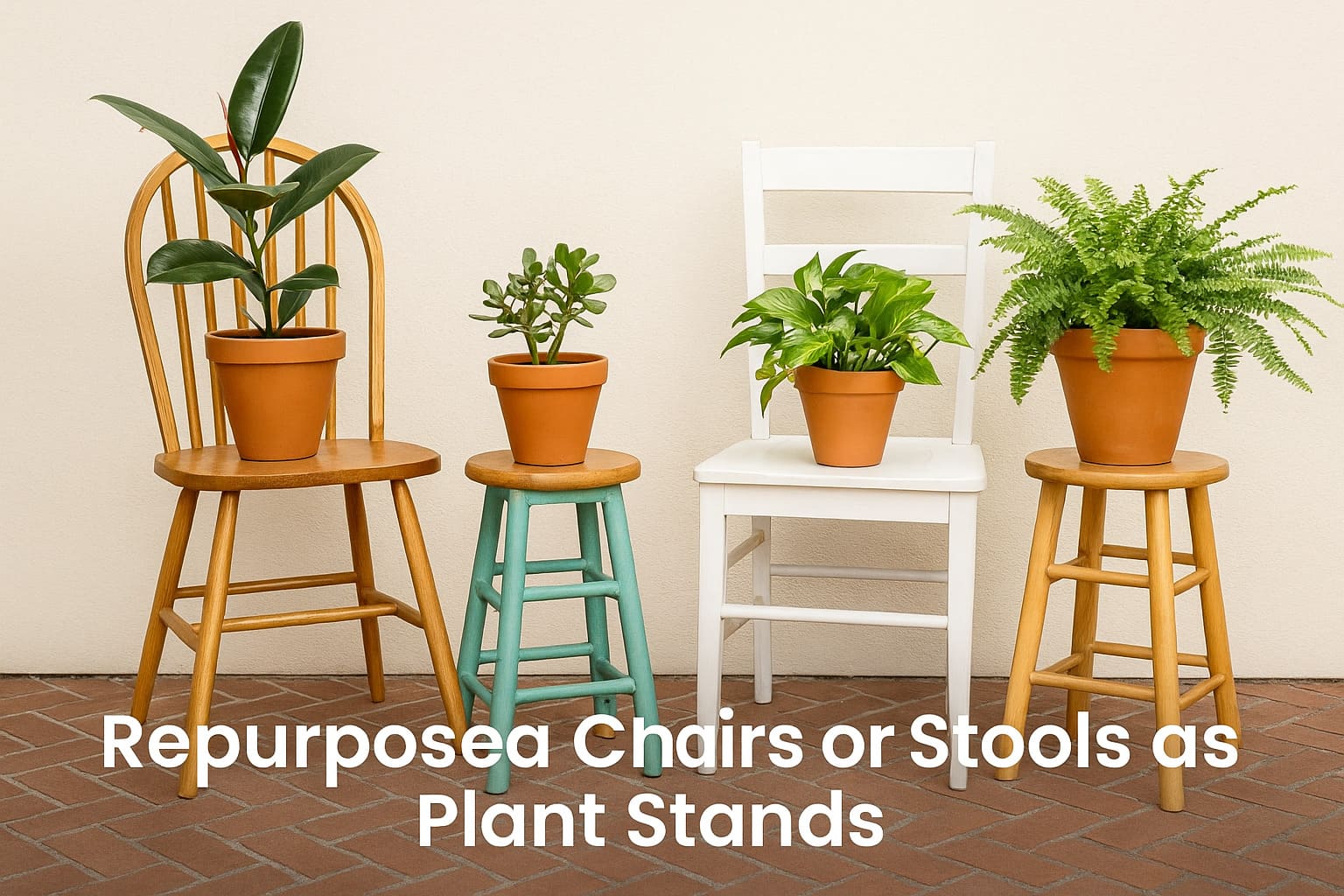
Before you toss out that old stool or side chair, consider giving it a new life as a plant stand!
Upcycling furniture is an eco-conscious trend (repurposing items reduces waste and carbon footprint) and adds character to your space.
A vintage wooden chair can hold a large potted fern in the seat; a small stool can elevate a snake plant beside a sofa or bed.
This approach yields incredibly budget-friendly plant stand ideas – often $0 if you already own the piece.
How to Do It:
Take a sturdy stool, end table, or even a short ladder and simply place your plant on it. If the seat is flat and wide, you can cluster two or three smaller pots.
You might repaint the furniture for a fresh look or distress it for shabby-chic style.
Ensure the furniture piece is stable and can bear the weight (most chairs and stools can support medium pots easily).
Why It’s Great:
This idea brings instant character – imagine a green ivy spilling over an antique chair in a cozy reading nook, or a modern painted stool holding a fiddle leaf fig in a bedroom corner.
It’s also multifunctional: if you need extra seating or a side table, just relocate the plant temporarily.
For bedroom plant stand ideas, a nightstand or step stool can double as a plant display (add a pothos or peace lily to freshen the air).
Plus, you’re reusing items, which is eco-friendly – a win-win for you and the planet
3. Cinder Block (or Crate) DIY Tiered Stand
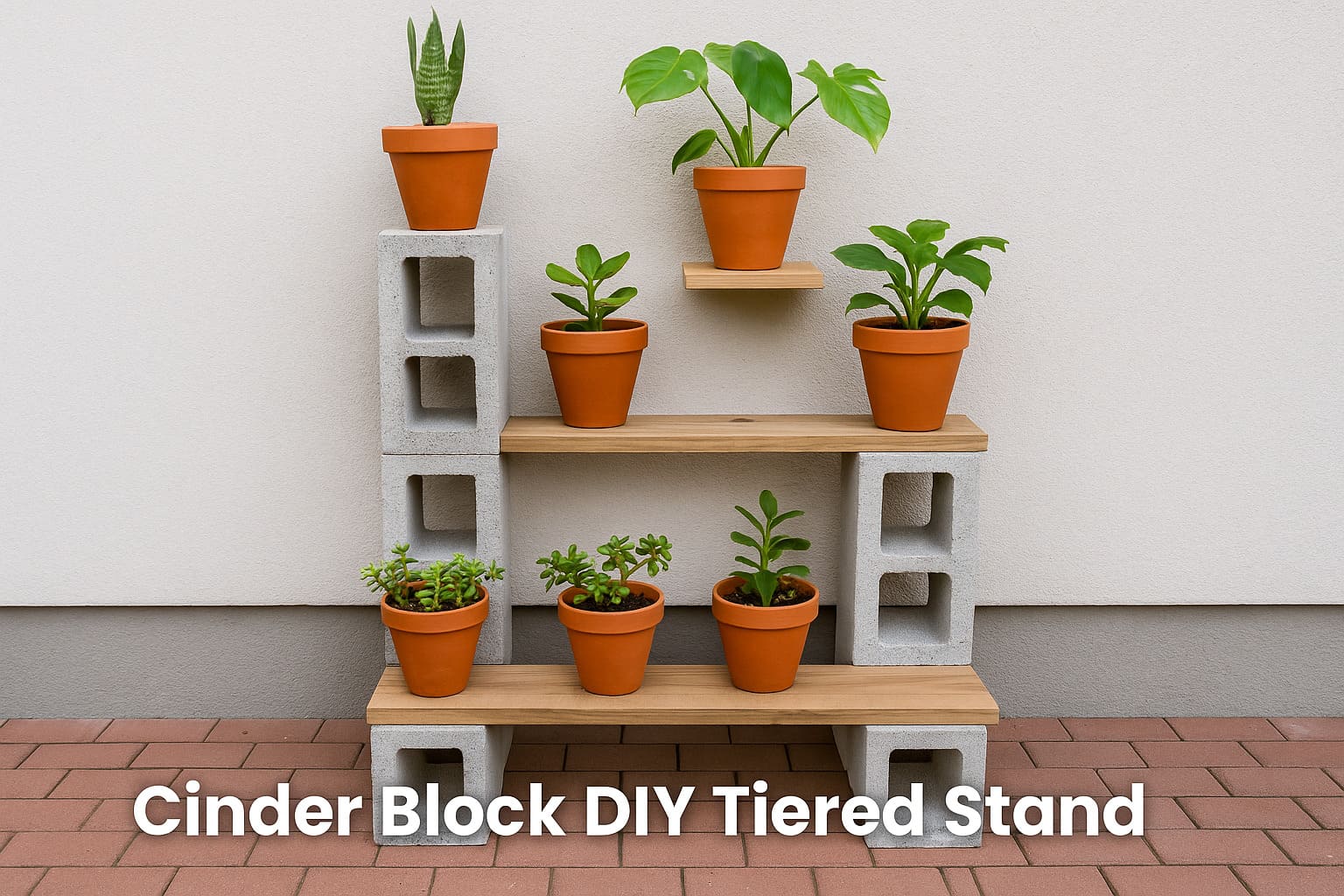
If you’re looking for a quick and modern DIY stand, try a cinder block plant stand. Stack a couple of cinder blocks with wooden boards to create a sturdy shelf unit.
This industrial-chic solution costs little (blocks and lumber are cheap) and can be configured to whatever length or tiers you need.
It’s great for indoor or balcony gardens – and you can even use it outdoors as it’s weatherproof.
How to Do It:
Stack two cinder blocks as the base supports (upright or on their sides) about 2–3 feet apart. Lay a wooden plank across them as a shelf.
Repeat another level above by adding more blocks and another board. You can build a 3-tier plant shelf easily with 4 blocks and 2 boards
For a smaller version, use wooden crates: stack crates sideways to form cubbies for plants (anchor them together for safety).
Pro tip: Add some construction adhesive to secure blocks, and consider painting the blocks for a pop of color.
Why It’s Great:
This DIY stand is highly customizable. You can adjust the length (get a longer board for more plants) or height (add tiers as needed).
It provides a lot of surface area for many pots – perfect for plant parents who keep accumulating greenery.
The style suits modern and minimalist decor, especially if left in raw grey concrete or painted matte black/white.
4. DIY Mid-Century Modern Plant Stand
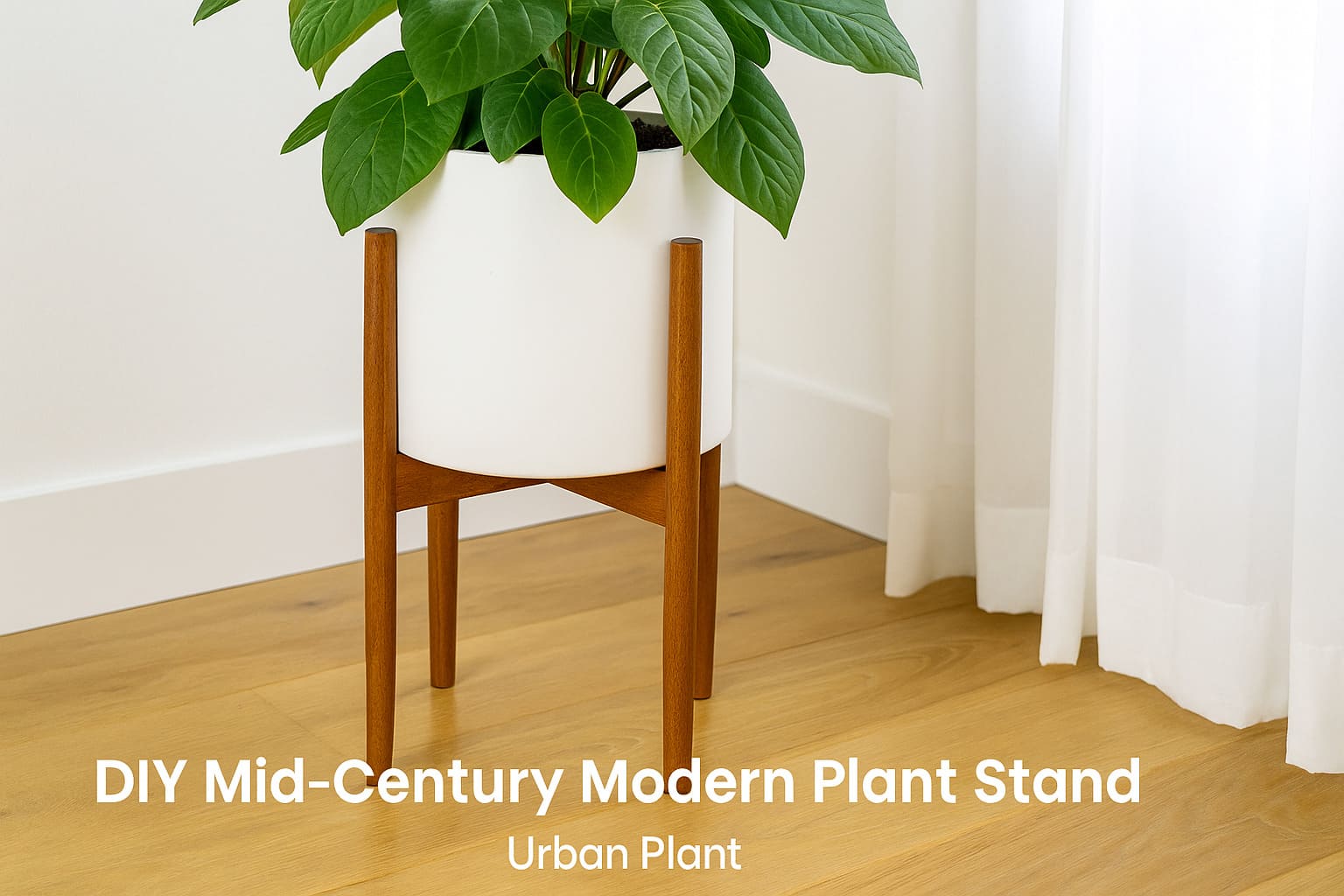
For a sleek modern indoor plant stand, try crafting a mid-century inspired holder.
The classic mid-century plant stand is a wooden stand that holds a single pot, often with an adjustable width or a crisscross base.
You might have seen those elegant stands that lift planters a few inches off the ground – they were popular in the 1950s and are totally back in style.
Good news: you can DIY one with basic materials!
How to Do It:
Option A: Build a simple X-frame stand using two pieces of wood. Cut two hardwood lengths and notch them in the middle so they interlock in an X shape (forming a cross at the center).
This creates a four-legged stand. Glue or screw for stability. Stain it walnut or teak for that mid-century vibe.
Option B: Use hairpin metal legs (available online) attached to a round wooden board to create a low plant table with mid-century flair.
Option C: Follow a woodworking plan for a two-tier mid-century stand (there are many tutorials).
Why It’s Great:
Mid-century design is timeless and clean. This stand will complement almost any decor style – from retro to contemporary.
It highlights the plant as a focal point (after all, “everyone likes to be put on a pedestal”, as the saying goes).
If DIY isn’t your forte, Urban Plant offers ready-made wooden stands inspired by mid-century style, constructed from sustainable bamboo and adjustable for different pot sizes
5. Natural Tree Stump or Log Stand
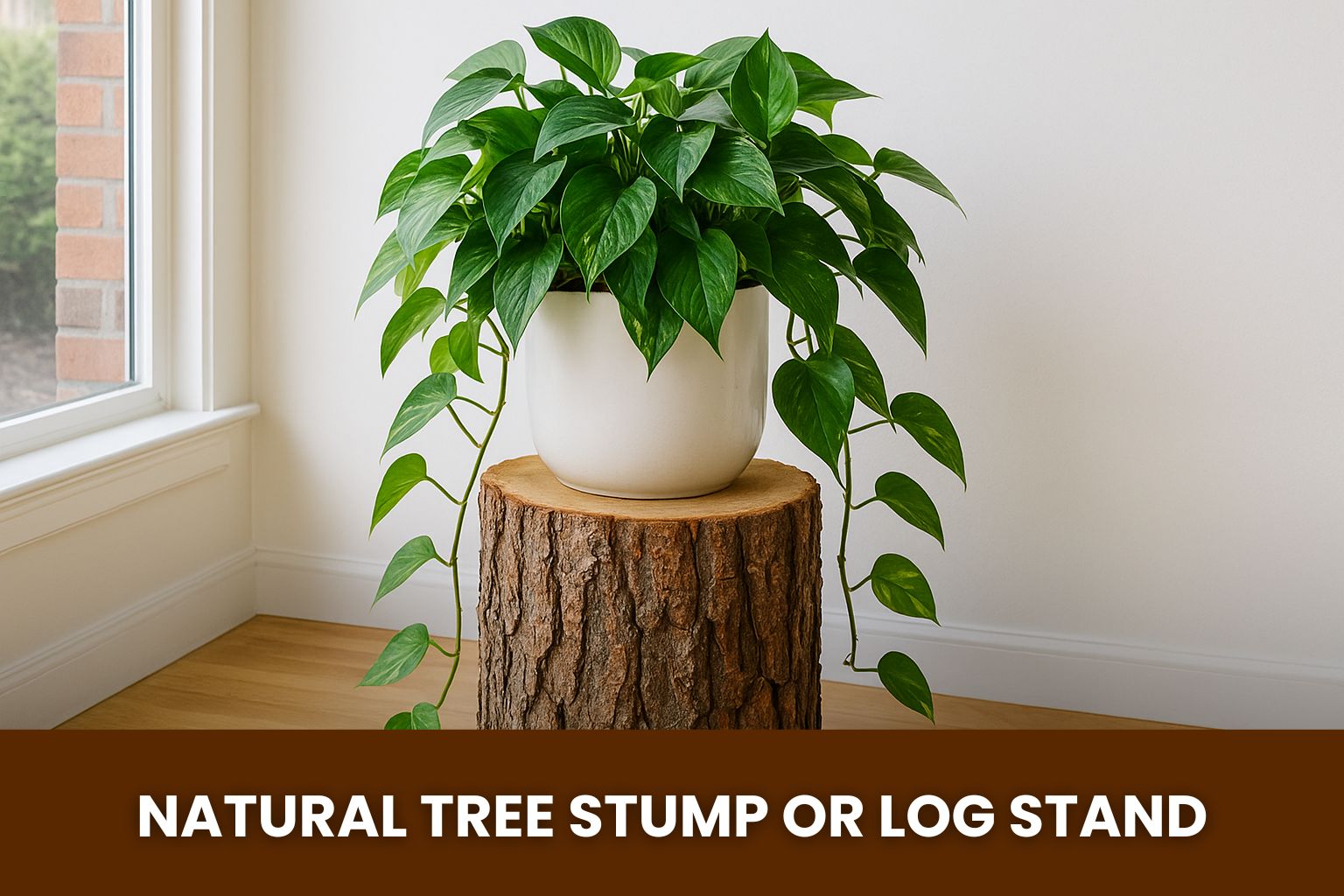
Bring the outdoors in with a natural tree stump plant stand.
This is as rustic-chic as it gets – a sturdy section of log or tree stump can serve as a low stand or side table, perfect for holding plants.
It adds organic texture and is fantastic for boho or cottagecore interiors. You might use a stump as a short pedestal for a large leafy plant, or even a cluster of three different height stumps for a tiered display.
How to Do It:
Obtain a dry tree stump or thick log cut. (If it’s a fresh cut, you’ll need to let it dry out and maybe treat it to prevent pests).
Cut it to the desired height (many people use about 8–12 inches height for a small stand or up to 18 inches for side-table height). Sand the top and edges to smooth any roughness.
You can leave the bark on for a wild look or strip it off and seal the wood with clear polyurethane for a polished finish.
If you prefer, paint the stump partially (e.g., a dipped white bottom) for a modern twist.
Why It’s Great:
Each stump is one-of-a-kind with its wood grain and shape. It imbues your space with a touch of nature – lovely for displaying a fern, ivy, or flowering plant.
Tree stump stands are sturdy and solid (great for heavier pots).
They work indoors and outdoors, but if outdoors, make sure to weather-seal the wood.
Indoors, consider placing felt pads under it to protect floors.
Style-wise, a stump can warm up a minimalist room or enhance a nature-inspired decor.
6. Hanging and Wall-Mounted “Stands”
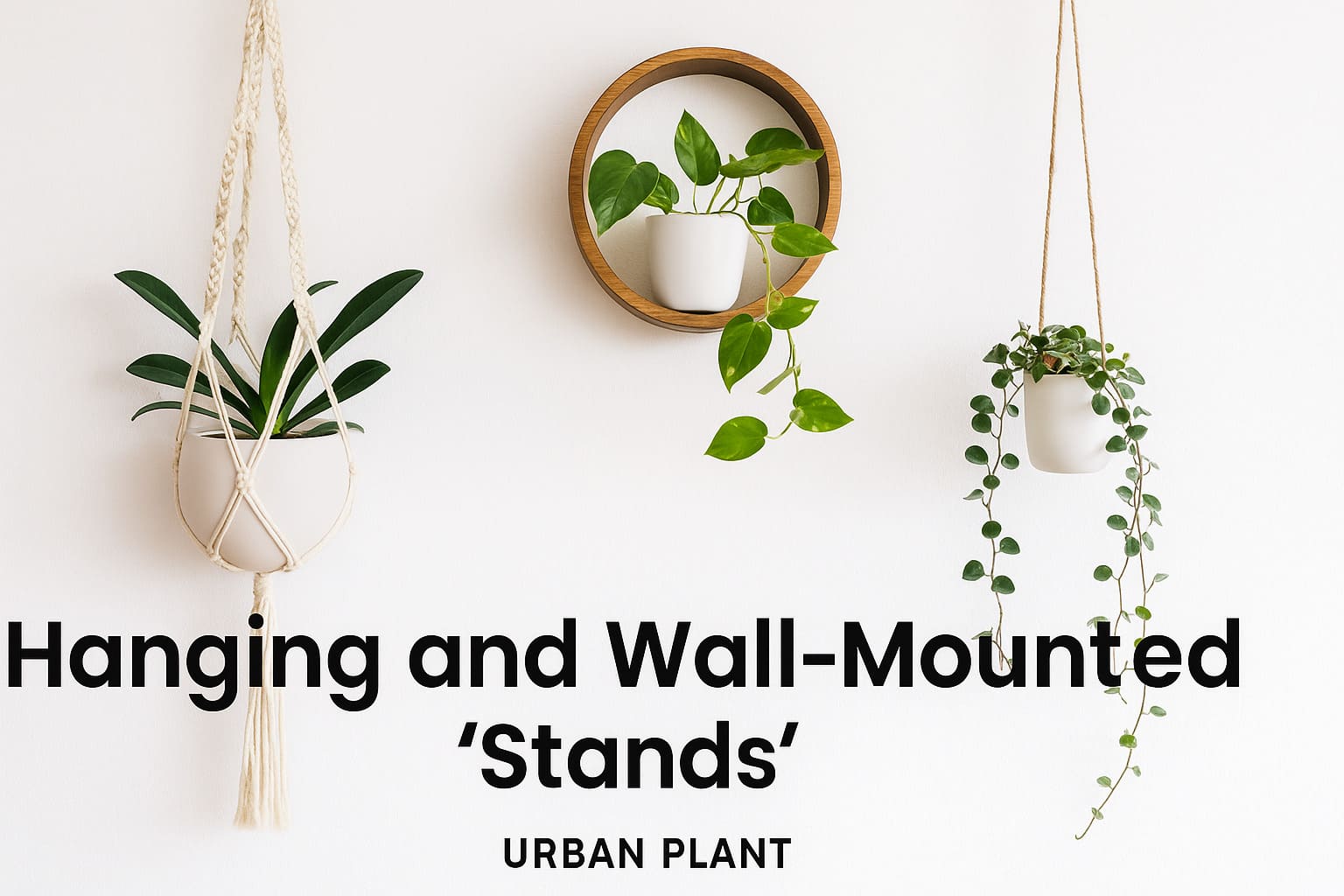
Who says a plant stand must sit on the floor? Some of the most creative plant stand ideas involve taking to the walls or ceiling.
Hanging plant shelves or wall-mounted holders can display your plants beautifully while saving floor space.
This is especially useful for tiny apartments or to create an eye-catching green wall in a living room or bedroom.
Ideas to Try:
a) Macrame Hanging Shelf
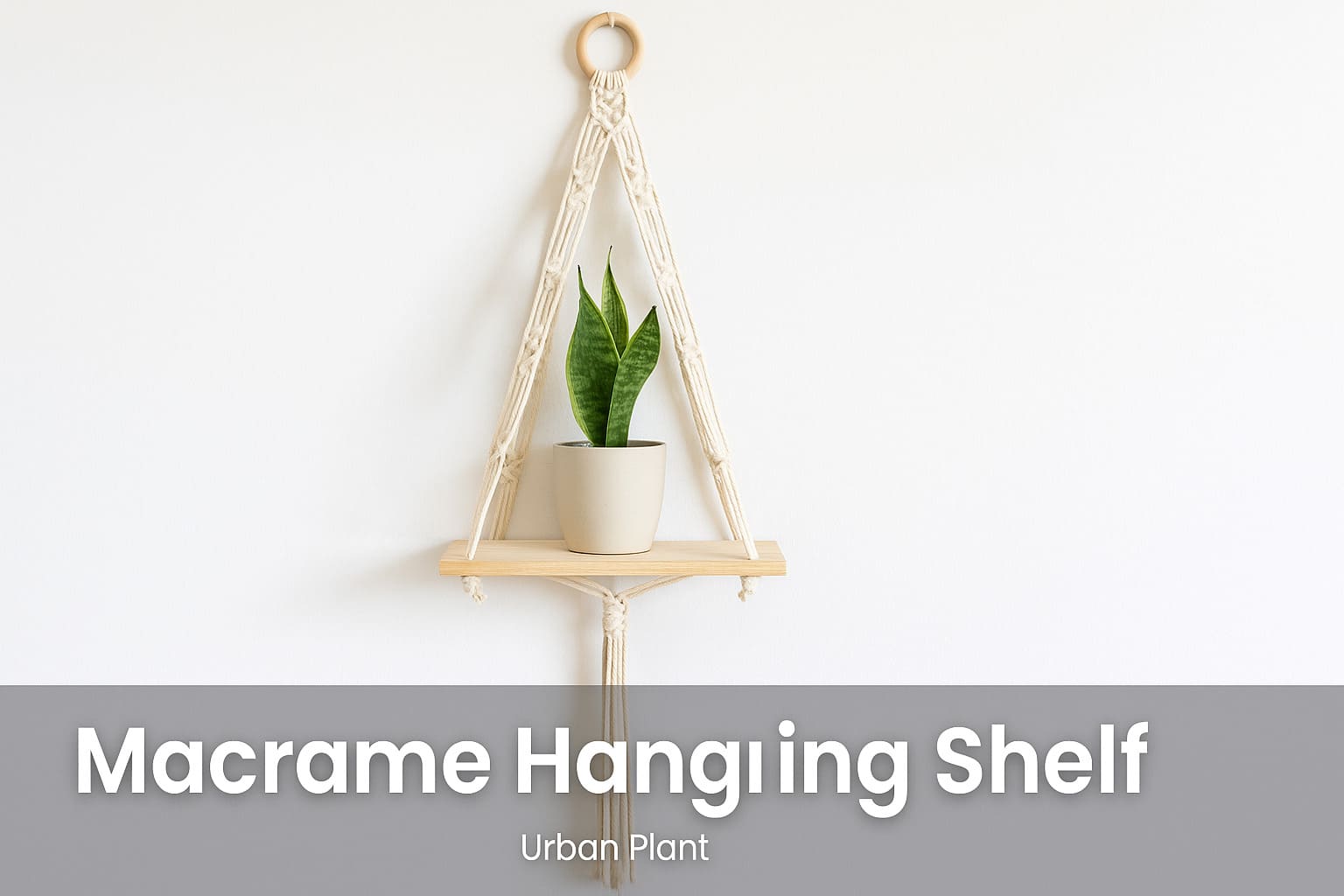
Craft a macrame plant hanger that holds a wooden board as a shelf. You can place a couple of small pots on it. Hang it from the ceiling or a wall bracket – it creates a floating plant stand that’s boho and space-efficient.
b) Wall Ledge or Grid
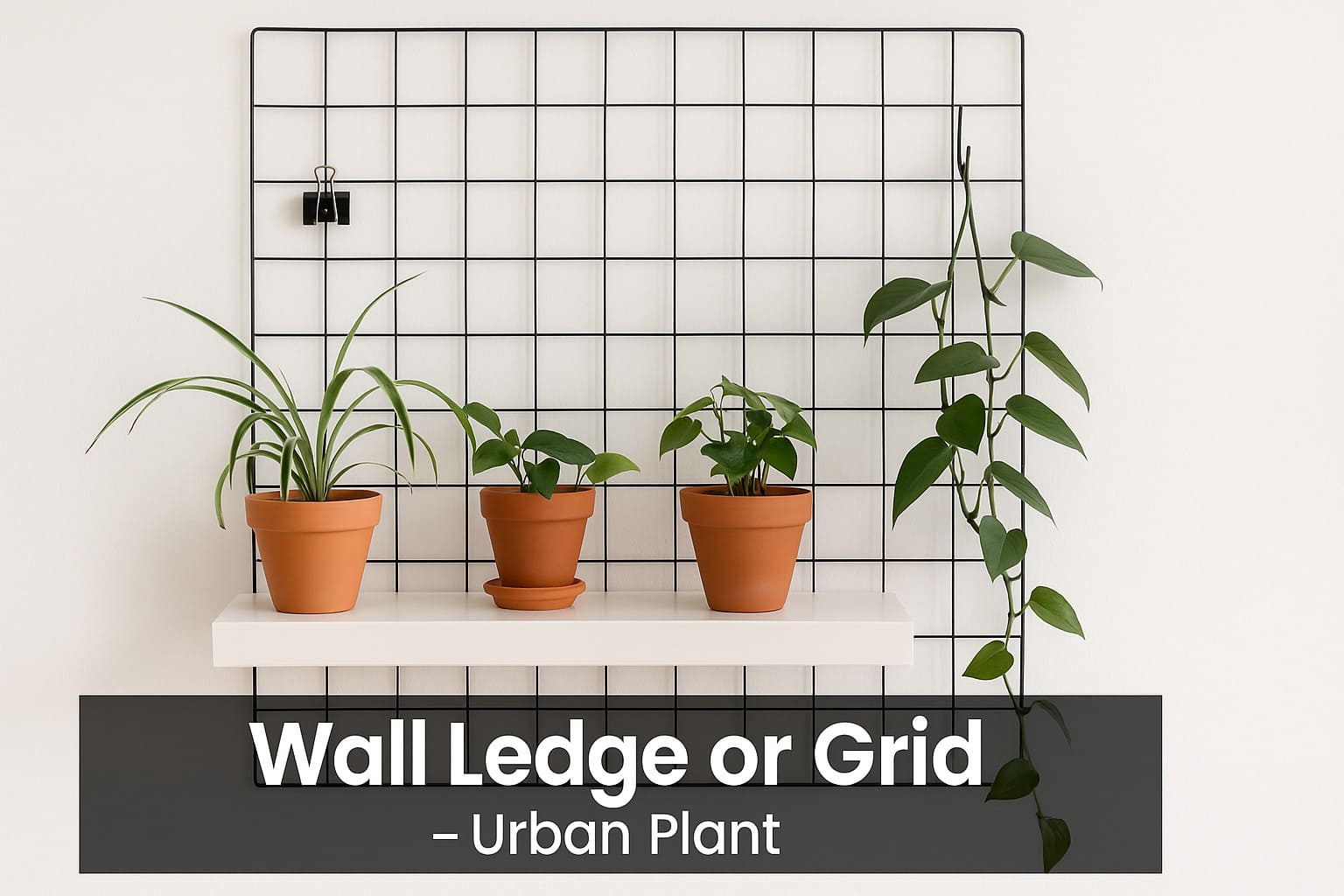
Install a sturdy floating shelf or a grid panel on the wall and use it to host small planters.
For example, a simple wall-mounted plank near a window can hold succulents and trailing plants, effectively acting like a plant stand off the floor.
c) Tension Rod Stand
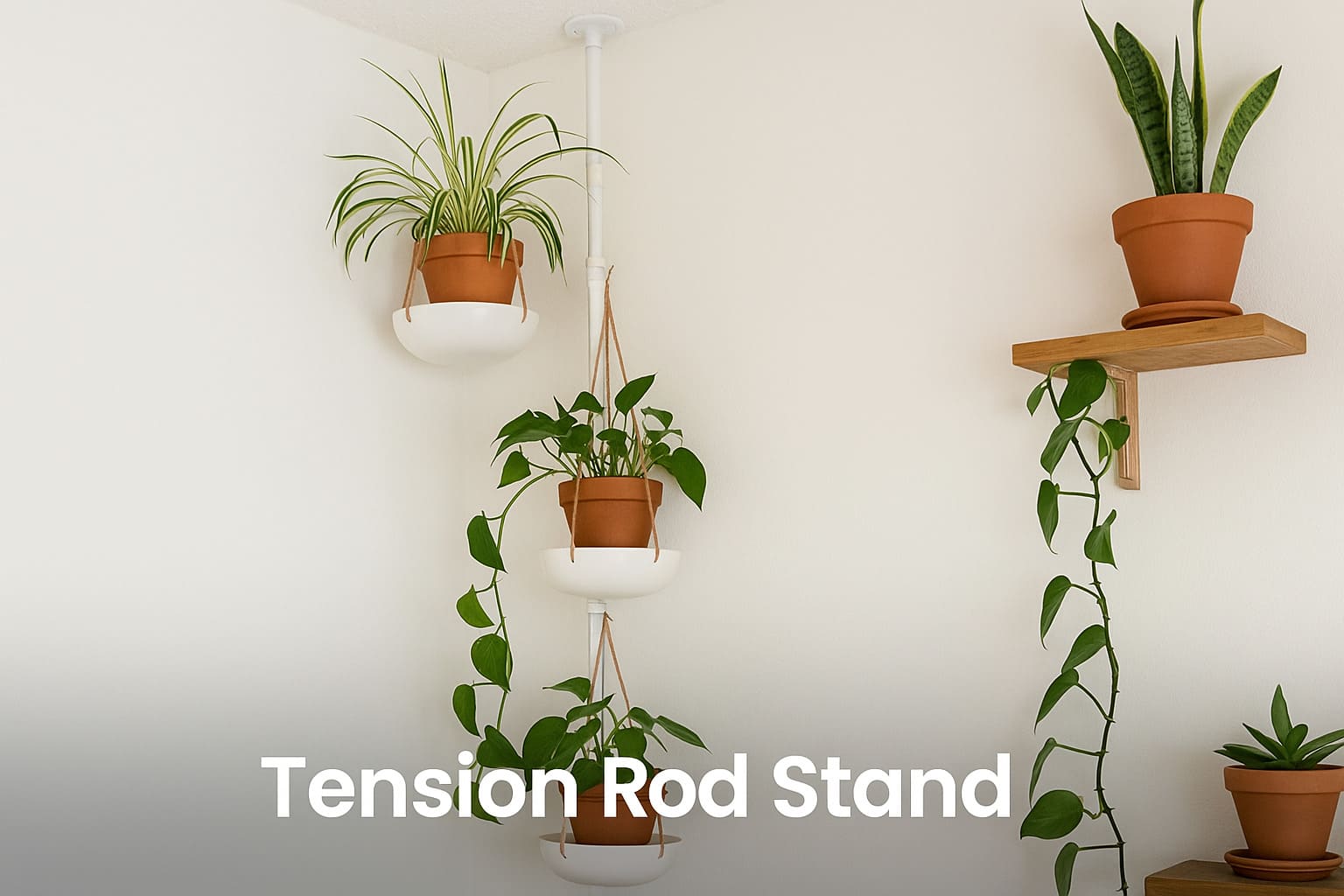
Use a spring tension rod (the kind for curtains) vertically between floor and ceiling in a corner.
You can attach clamp-on shelves or hanging pots to it.
This mimics the function of a multi-tier stand without any footprint on the floor – great for bedroom corners or offices.
Why It’s Great:
Hanging or wall solutions allow plants to cascade at eye level, creating an urban jungle feel. They keep surfaces clear (useful if you have pets or kids that might knock over floor stands).
In a bedroom, a hanging planter in a corner with a soft trailing pothos adds a calming touch of green without cluttering the nightstand.
And if you rent, many of these can be done with minimal wall damage (e.g., one or two anchor hooks).
These ideas are “stands” in spirit – they display plants – and they prove how creative you can get with vertical gardening.
Tip: Combine a floor plant stand with a hanging one nearby to create depth and layers to your indoor garden.
Bringing It All Together (Styling Tips)
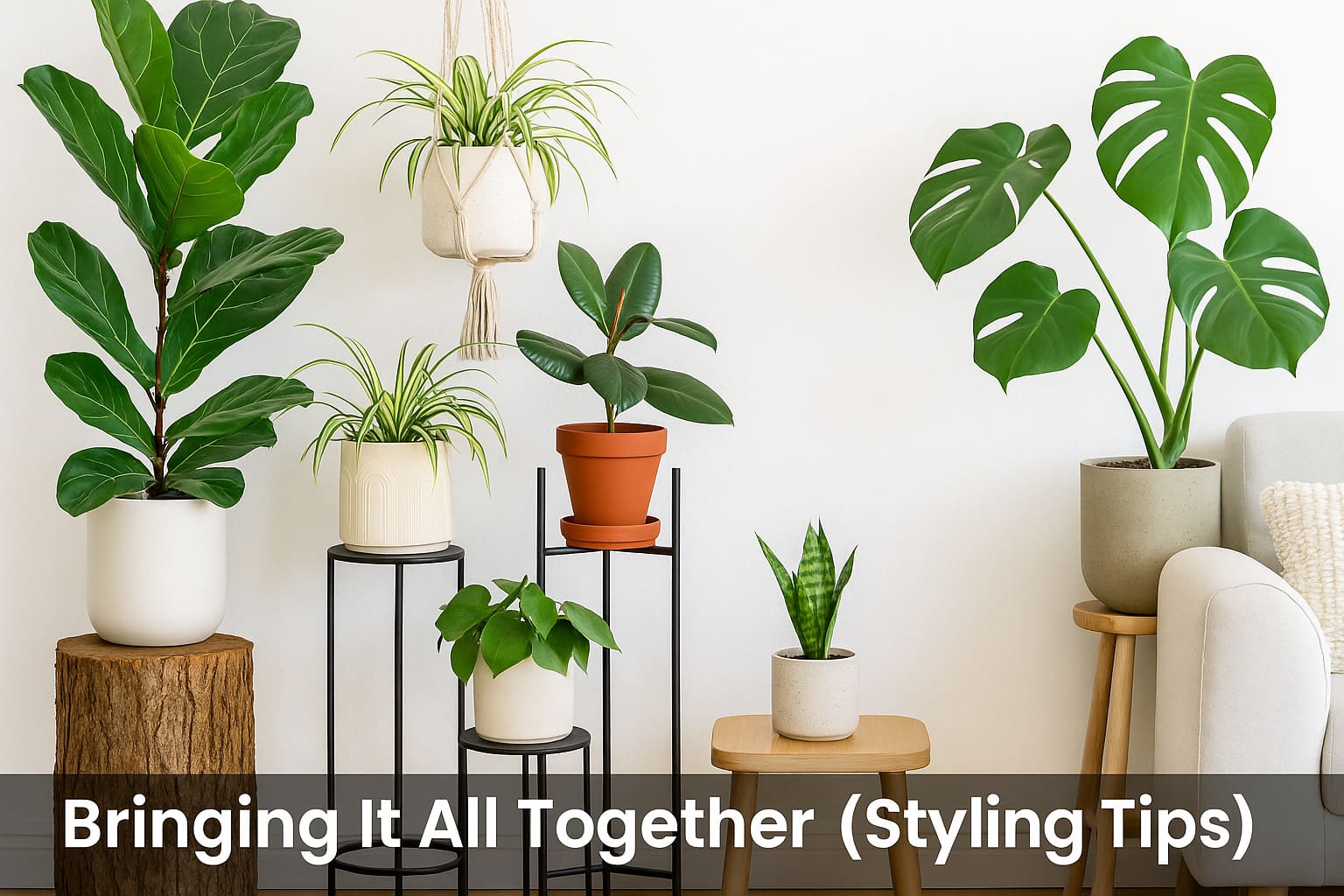
Once you’ve chosen a DIY plant stand idea, have fun styling it! Group plants of varying heights and leaf textures for an interesting display.
For instance, on a ladder stand, place tall snake plants up top (where they draw the eye), bushy pothos or philodendrons in the middle (to drape gracefully), and small succulents or herbs on lower shelves.
Consider color coordination: you might paint all your stands a unified color (black, white, or a bold hue) for a cohesive look, or embrace eclectic style by mixing metals and woods.
Remember that plant stands not only showcase plants but also improve their growth by raising them to better light and airflow.
A multi-tier metal stand like Urban Plant’s heavy-duty 3-step stand offers a beautiful cascading display and optimizes light for each plant.
Urban Plant has you covered with a range of stylish metal and wooden stands to suit modern interiors – from sleek iron tiered shelves to elegant wooden pot holders.
Expert Tip:
Rotate your plants occasionally on the stands so each gets even light. And don’t overcrowd a single stand; give each pot some breathing room to shine (and to make watering easier).
By mixing stands of different heights (a tall ladder next to a short stump, for example), you’ll create an eye-catching, dynamic planter display that is as aesthetic as it is functional.
FAQs
Q1. What are some easy DIY plant stand ideas for beginners?
A: Some of the easiest DIY plant stand ideas for beginners include using cinder blocks and wooden planks, upcycled stools or chairs, and crate-based tiered plant shelves. These DIY projects require minimal tools, are budget-friendly, and perfect for indoor or outdoor plant displays.
Q2. How do I create a modern indoor plant stand at home?
A: To create a modern indoor plant stand, try building a mid-century wooden X-stand using hardwood dowels or adding hairpin legs to a round wood base. These sleek designs elevate your plant decor and complement minimalist interiors beautifully.
Q3. What are the best plant stand ideas for small bedrooms?
A: The best bedroom plant stand ideas include wall-mounted floating shelves, small stools beside the bed, ladder-style vertical stands, and corner-tiered racks. These space-saving plant stands help add greenery without cluttering your bedroom.
Q4. Can I use old furniture as a DIY plant stand?
A: Yes, repurposing old furniture like stools, nightstands, or end tables is one of the best budget-friendly plant stand ideas. Simply clean, paint, or seal the piece, and place your potted plant on top to give it a stylish new home.
Q5. What materials are best for outdoor DIY plant stands?
A: For outdoor DIY plant stands, use durable materials like treated wood, cinder blocks, metal frames, or weather-sealed crates. These can withstand moisture and sunlight while securely supporting your pots and planters.
Q6. How do I make a budget-friendly plant stand at home?
A: To make a budget-friendly plant stand, use everyday items like wooden crates, recycled stools, tree stumps, or stackable bricks. These materials are often free or inexpensive and make excellent aesthetic planter display ideas.
Q7. Are vertical ladder stands good for indoor plant displays?
A: Yes, ladder-style vertical plant stands are excellent for indoor use. They offer multiple tiers, save floor space, and are ideal for creating an indoor garden wall effect, especially in apartments or compact homes.
Q8. What are space-saving plant stand ideas for apartments?
A: Space-saving plant stand ideas for apartments include wall-mounted shelves, hanging macramé plant holders, vertical ladder racks, and slim corner stands. These designs allow you to decorate with plants without sacrificing space.
Q9. How do I style a DIY plant stand for home decor?
A: Style a DIY plant stand by combining plants of different heights and textures, using decorative pots, and placing the stand in well-lit corners. For aesthetic planter display ideas, try layering with hanging plants or grouping multiple stands.
Q10. Can plant stands improve plant health indoors?
A: Yes, indoor plant stands improve air circulation, help plants access more light, and reduce the risk of pests or overwatering. Elevating your plants also protects surfaces and makes plant care more convenient.
Conclusion
By implementing these ideas, you’ll create an indoor jungle that’s both stylish and personal.
Whether you DIY or buy (Urban Plant’s collection has lots of modern indoor plant stand options), the goal is to elevate your green friends – literally and decoratively.
Happy decorating with your new plant stands! Enjoy the beauty and serenity your leafy companions bring to your space.





